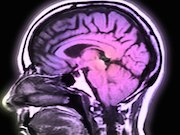Significant correlation even after adjustment for all covariates, including age, sex, alcohol consumption
MONDAY, Nov. 20, 2017 (HealthDay News) — Nonalcoholic fatty liver disease (NAFLD) is associated with smaller total cerebral brain volume, according to a study published online Nov. 20 in JAMA Neurology.
Galit Weinstein, Ph.D., from the University of Haifa in Israel, and colleagues examined the correlation between prevalent NAFLD and brain magnetic resonance imaging measures in a cross-sectional study involving 766 individuals from the Offspring cohort of the Framingham Study. Participants were eligible if they did not have excessive alcohol intake and were free of stroke and dementia.
The researchers found that even after adjustment for all covariates, including age, sex, alcohol consumption, visceral adipose tissue, body mass index, menopausal status, systolic blood pressure, hypertension, current smoking, cardiovascular disease, physical activity, and insulin resistance, there was a significant correlation for NAFLD with smaller total cerebral brain volume. The differences in total cerebral brain volume for those with and without NAFLD corresponded to 4.2 and 7.3 years of brain aging in the general sample and in individuals aged younger than 60 years, respectively. There were no significant correlations seen between NAFLD and hippocampal or white matter hyperintensity volumes or covert brain infarcts.
“Nonalcoholic fatty liver disease is associated with a smaller total cerebral brain volume, independent of visceral adipose tissue and cardiometabolic risk factors, pointing to a possible link between hepatic steatosis and brain aging,” the authors write.
Copyright © 2017 HealthDay. All rights reserved.








